Cross-selling pool and spa products may be one of the best ways to increase your sales. It's also a solid way to improve customer service experiences. Cross-selling is more common than many realize.
Think about the last time you went to buy something online: you scrolled on the product's page to get more information and likely saw a list of related products or a combination of products that complement each other. That's cross-selling – increasing access to products for customers, and that's why it is one of the 2022 retail trends companies can’t ignore.
Importance of Knowing Your Inventory and Offers Well
It is critical for those marketing any product to know the inventory and any offers provided — and to ensure that, if you are going to cross-sell products, they will be available to the buyer when they decide to invest in them. Strategically aligning products that work together and that will be accessible to the customer is essential.
Understanding How Products Work Together To Cross-Sell
Knowing your inventory and how your products relate to each other can play a significant role in cross-selling pool and spa products. For example, a customer looking for pool products may also be interested in outdoor living pieces that they can use to complement their surroundings. Knowing how your products work together is a big part of that process. What else can you offer a person that comes to your site that they may also need or want based on what they are searching for?
Improve Customer Experience With Complimentary Products
Cross-selling is one of the most effective marketing strategies. It's used heavily by businesses because it works so well. How does this directly impact customer service?
First, if you have your inventory and special offers in line, and you offer products you know your customers may appreciate, that's going to give them a boost of satisfaction. Not only do they get what they need, but they get something even better than what they were looking for initially.
Second, many companies will cross-sell products and create combinations of products that are slightly lower in price when bought together at the same time. When the customer thinks they are getting a deal and getting the products they need, that will give them another positive experience working with your company.
Substitutions: Keep Customers Engaged With You When Their Go-Tos Are Out of Stock
Another important way to use cross-selling is when there's a problem with inventory. Many companies today are struggling to keep products in stock due to shipping and labor problems. When products are out of stock, having a cross-selling plan may allow you to make suggestions for products to fill the customer's needs. That means when you cannot provide their go-to product, you can still offer them substitutions. That, too, helps to contribute to long-term success and customer satisfaction.
Strategies for Effective Cross-Selling and Upselling
How can you pull together a cross-selling campaign and get the results you need? Here are a few strategies that work well for most companies, including pool and spas and outdoor living sectors.
#1: Use Customer Data To Know the Needs of Your Customer
The more data you have about customers' needs, the more likely you are to create offers that people want and can invest in at that moment. Learn about your customers' lifestyles, ages, and even their habits. The more data you have on how someone arrives at your website and their needs, the better.
#2: Suggest Bundles
As noted, one of the best ways to drive cross-selling opportunities is to provide your customers with bundles. Who doesn't like to get something that seems more affordable? Bundles bring together products that work together. It may not have a discount on it, but purchasing these products together tends to be a good value or benefit the customer.
#3: See the Value in Building Customer Experiences
Instead of just seeing a discount as a reduced price, determine the long-term value of that customer relationship. Effective cross-selling organizations can complement their profit and loss goals with the benefit of having long-term, multi-year support from those customers. In other words, building value and brand helps to encourage your customers to come back.
The more you know about your customer base and what customers buy, the more likely you will consistently get the right products into their hands. Cross-selling takes a bit of work to get right, but once in place, it may drive up sales and help you reach your profit goals for the year and years after with satisfied customers.


